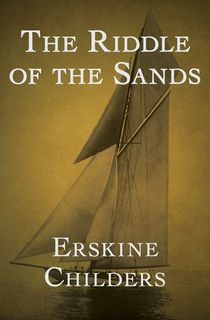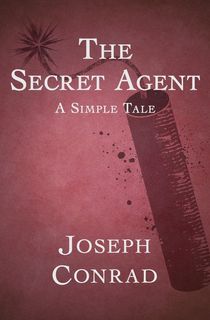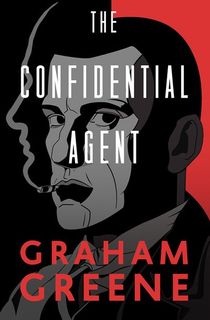John Le Carre’s first novel The Spy Who Came in From the Cold was published in 1963. With that and subsequent work such as Tinker, Tailor, Soldier, Spy and Smiley’s People, Le Carre established the blueprint for modern British spy novelists like Charles Cummings, Edward Wilson, and Mick Herron.
But Le Carre didn’t invent the British espionage thriller. Instead, he was part of a long tradition stretching way back to the start of the twentieth century. Here's a look at some of the impressive contributors to the tradition of the espionage thriller.
Erskine Childers
Best-selling spy novelist Ken Follet called Erskine Childers' The Riddle of the Sands (1903) “The first modern thriller” and it’s hard to argue with that assessment. The Riddle of the Sands is a real page-turner and did much to establish the spy novel as a genre.
It feature two upper-crust English yachtsmen, Charles Carruthers and Arthur Davies who embark on a duck-shooting expedition in northern Germany. They stumble across a German plot to invade Britain. Rumbled by the Kaiser’s navy, the duo escape by sailing their little boat through treacherous waters often in deep fog, all the while stalked by a ruthless enemy. It would be Childers only foray into fiction. A passionate supporter of Irish independence, he died in front of a firing squad in 1923.

The Riddle of the Sands
Joseph Conrad
Best known today for The Heart of Darkness, the novella that inspired Francis Ford Coppola’s Apocalypse Now, Conrad was also the author of one of the first high quality spy novels.
The Secret Agent (published in 1907) tells the story of a band of anarchists who plan a series of bombing outrages in London from the dreary back street shop of a Soho pornographer (very Le Carre). Attempting to thwart the terrorists is Special Branch detective, Chief Inspector Heat, trying to muddy the waters are various spies from mainland Europe. Conrad is a master of atmosphere and characterization and, while The Secret Agent can’t be described as a thriller, it does have genuine suspense and a tragic twist at the end.

The Secret Agent
W. Somerset Maugham
William Somerset Maugham spoke fluent French and German and was recruited by British Intelligence shortly after the start of World War One. When the conflict ended he fictionalized his role as a spy in a series of short stories featuring the agent Ashenden. With a spymaster known only as “R” and featuring the sort of realistic tradecraft that gives Le Carre’s books their sense of truthfulness, these stories (collected in 1927 as Ashenden: Or the British Agent) are the first truly modern spy fiction.
Just as in Le Carre there is little violence, few chase sequences and no gun battles. Ashenden may be as smooth, sophisticated and attractive to women as James Bond, but even though he spends most of his career in Switzerland he never has a fistfight in a cable-car. Like real spies his work is subtle and devious – a little blackmail, a few veiled threats and every so often a soft push in the back to send an enemy over a cliff. Maugham’s writing is as stylish and witty as his hero. Raymond Chandler was a great admirer of Ashenden and it’s easy to see why.

Ashenden: Or the British Agent
Eric Ambler
Aside from Ashenden, most British spy fiction in the 1920s was comic-book stuff. Eric Ambler, an advertising agency copywriter, set out to change all that. Inspired by Maugham and the crime fiction of Dorothy L. Sayers, he created a series of masterful and realistic espionage thrillers commencing with The Dark Frontier in 1936.
At least half a dozen of the works he produced between that book and his great 1964 novel A Kind of Anger are genuine classics. Ambler’s best novels (including Cause for Alarm (1938), The Mask of Dimitrios (1939), Journey into Fear (1940)) are those set in a Europe that is being brutalized by fascism and Soviet communism. With its homeless emigres, conmen, gangsters, Nazis, and corrupt officials, it’s fertile ground for the novelist and Ambler recreates it superbly and with genuine empathy for the ordinary people caught up in the midst of the mayhem.

The Dark Frontier
Graham Greene
One of the greatest English writers of the twentieth century, Greene also had a shadowy other life which included a long period working for MI6. As a journalist, he travelled to the world’s trouble spots building up a picture of international intrigue that feeds into espionage novels such as The Confidential Agent (1939), The Ministry of Fear (1943), The Quiet American (1955), Our Man in Havana (1958) and The Human Factor (1978). While other English spy writers tend to talk up the efficiency of the British intelligence services, Greene is far more cynical about their competence and motivation. And since his boss at MI6 was infamous double-agent Kim Philby, you can see why.

The Confidential Agent
Manning Coles
The pen name of two Hampshire neighbors—Adelaide Manning and Cyril Coles—who had both worked for British Military Intelligence during World War One, Manning Coles wrote more than twenty novels featuring master spy Tommy Hambledon between 1940 and 1963. The later books have a comic edge, but the early novels such as Drink to Yesterday (1940) and Pray Silence (1941) are based on Cyril Coles’ own hair-raising experiences as an agent. A fluent German speaker, the teenage Coles was sent behind enemy lines to spy on Germany. Much like Le Carre’s work, these books are gritty, understated and realistic, and spiced with gallows humor.
.png?w=3840)

